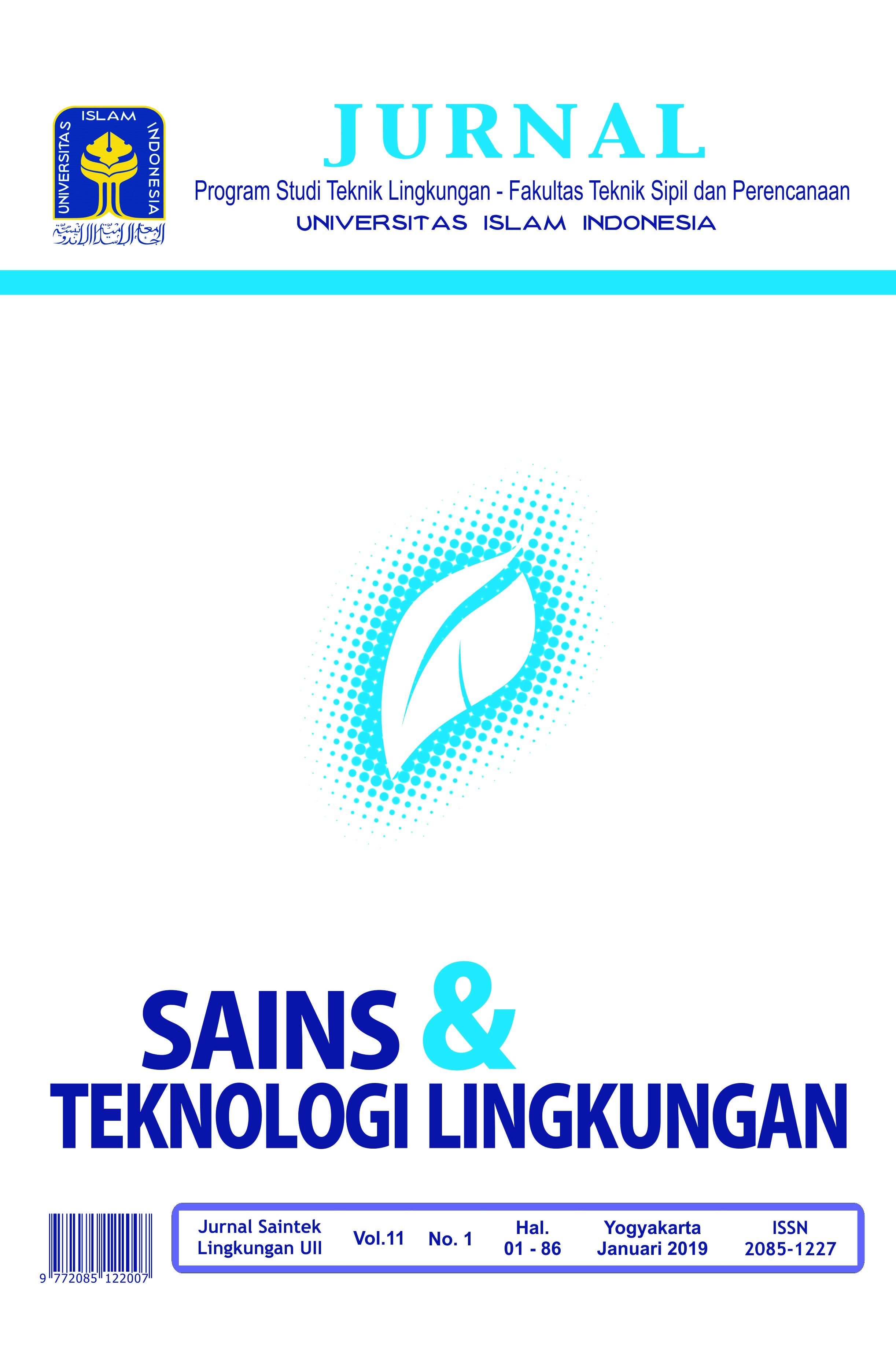Main Article Content
Abstract
Plastic pots are widely used in agriculture and forestry nurseries. Its popular use has resulted in the increased pollution to the environment because they can not be decomposed by soil microorganism. It is therefore necessary to find an alternative substitute for pots made from an organic material. This study was aimed to optimize the composition of the addition of natural adhesives in the manufacture of organic pots made from fiber as palm oil waste. Furthermore, this research was conducted to characterize the physical and level of acceptance of organic pots. This study used an experimental method where results are concluded from the water content, water absorption, hedonic test and hedonic quality test. The organic pot moisture content was between 10.11-10.59%, while the absorption of organic pot water was between 129.25-155.48%. Pot with the lowest moisture content and water absorption was obtained from P2 treatment. The result of hedonic test shown that the highest level of pot acceptance in terms of color was the pot of treatment P5 and the texture aspect was the pot of treatment P1.
Keywords: fiber, gambier, organic pots, tapioca
Keywords
Article Details
Authors who publish with this journal agree to the following terms:
- Authors retain copyright and grant the journal right of first publication with the work simultaneously licensed under a Creative Commons Attribution License that allows others to share the work with an acknowledgement of the work's authorship and initial publication in this journal.
- Authors are able to enter into separate, additional contractual arrangements for the non-exclusive distribution of the journal's published version of the work (e.g., post it to an institutional repository or publish it in a book), with an acknowledgement of its initial publication in this journal.
- Authors are permitted and encouraged to post their work online (e.g., in institutional repositories or on their website) prior to and during the submission process, as it can lead to productive exchanges, as well as earlier and greater citation of published work (See The Effect of Open Access).
References
- Alshehrei, F., (2017), Biodegradation of synthetic and natural plastic by microorganisms, Journal of Applied & Environmental Microbiology, 5(1), 8-19.
- Dani, A. L., (2016), Pengaruh Perbedaan Konsentrasi Perekat Gambir (Uncaria gambir, Roxb) Terhadap Sifat Fisis dan Mekanis Papan Partikel Dari Sabut Buah Pinang. Fakultas Teknologi Pertanian. Universitas Andalas Padang
- Haryanti, P., Setyawati, R., & Wicaksono, R., (2014), Pengaruh Suhu dan Lama Pemanasan Suspensi Pati serta Konsentrasi Butanol terhadap Karakteristik Fisikokimia Pati Tinggi Amilosa dari Tapioka, Agritech, 34(3), 308-315.
- Herawati, H., (2008), Penentuan umur simpan pada produk pangan, Jurnal Litbang Pertanian, 27(1974).
- Kamal, N., (2014), Karakterisasi dan Potensi Pemanfaatan Limbah Sawit, ITENAS, Bandung.
- Kamsiati, E., Herawati, H., & Purwani, E. Y., (2017), Potensi Pengembangan Plastik Biodegradable Berbasis Pati Sagu Dan Ubikayu Di Indonesia, Jurnal Penelitian dan Pengembangan Pertanian, 36(2), 67-76.
- Kasim , A., (2011), Proses Produksi dan Industri Hilir Gambir, Andalas University Press. Padang.
- Kasim, A., Yumarni, Y., & Fuadi, A., (2018), Pengaruh Suhu dan Lama Pengempaan pada Pembuatan Papan Partikel dari Batang Kelapa Sawit (Elaeis guineensis Jacq.) dengan Perekat Gambir (Uncaria gambir Roxb.) terhadap Sifat Papan, Jurnal Ilmu dan Teknologi Kayu Tropis, 5(1), 17-21.
- Nursyamsi, N., (2015), Biopot Sebagai Pot Media Semai Pengganti Polybag yang Ramah Lingkungan, Buletin Eboni, 12(2), 121-129.
- Roza, I., (2009), Pengaruh Perbedaan Proses Penyediaan Serat dengan Cara Mekanis Limbah Tandan Kosong Sawit terhadap Papan Serat, Sainstek, 12(1), 9-17.
- Setyaningsih, D., Apriyantono, A., & Sari, M. P., (2010), Analisis sensori untuk industri pangan dan agro, Institut Pertanian Bogor Press, Bogor.
- Susilawati & Supijatno, (2015), Pengelolaan Limbah Kelapa Sawit (Elaeis guineensis Jacq.) di Perkebunan Kelapa Sawit, Riau, Bul. Agrohorti., 3(2), 203–212.
- Verma, R., Vinoda, K. S., Papireddy, M., & Gowda, A. N. S., (2016), Toxic Pollutants from Plastic Waste- A Review, Procedia Environmental Sciences, 35, 701–708. https://doi.org/10.1016/j.proenv.2016.07.069.
References
Alshehrei, F., (2017), Biodegradation of synthetic and natural plastic by microorganisms, Journal of Applied & Environmental Microbiology, 5(1), 8-19.
Dani, A. L., (2016), Pengaruh Perbedaan Konsentrasi Perekat Gambir (Uncaria gambir, Roxb) Terhadap Sifat Fisis dan Mekanis Papan Partikel Dari Sabut Buah Pinang. Fakultas Teknologi Pertanian. Universitas Andalas Padang
Haryanti, P., Setyawati, R., & Wicaksono, R., (2014), Pengaruh Suhu dan Lama Pemanasan Suspensi Pati serta Konsentrasi Butanol terhadap Karakteristik Fisikokimia Pati Tinggi Amilosa dari Tapioka, Agritech, 34(3), 308-315.
Herawati, H., (2008), Penentuan umur simpan pada produk pangan, Jurnal Litbang Pertanian, 27(1974).
Kamal, N., (2014), Karakterisasi dan Potensi Pemanfaatan Limbah Sawit, ITENAS, Bandung.
Kamsiati, E., Herawati, H., & Purwani, E. Y., (2017), Potensi Pengembangan Plastik Biodegradable Berbasis Pati Sagu Dan Ubikayu Di Indonesia, Jurnal Penelitian dan Pengembangan Pertanian, 36(2), 67-76.
Kasim , A., (2011), Proses Produksi dan Industri Hilir Gambir, Andalas University Press. Padang.
Kasim, A., Yumarni, Y., & Fuadi, A., (2018), Pengaruh Suhu dan Lama Pengempaan pada Pembuatan Papan Partikel dari Batang Kelapa Sawit (Elaeis guineensis Jacq.) dengan Perekat Gambir (Uncaria gambir Roxb.) terhadap Sifat Papan, Jurnal Ilmu dan Teknologi Kayu Tropis, 5(1), 17-21.
Nursyamsi, N., (2015), Biopot Sebagai Pot Media Semai Pengganti Polybag yang Ramah Lingkungan, Buletin Eboni, 12(2), 121-129.
Roza, I., (2009), Pengaruh Perbedaan Proses Penyediaan Serat dengan Cara Mekanis Limbah Tandan Kosong Sawit terhadap Papan Serat, Sainstek, 12(1), 9-17.
Setyaningsih, D., Apriyantono, A., & Sari, M. P., (2010), Analisis sensori untuk industri pangan dan agro, Institut Pertanian Bogor Press, Bogor.
Susilawati & Supijatno, (2015), Pengelolaan Limbah Kelapa Sawit (Elaeis guineensis Jacq.) di Perkebunan Kelapa Sawit, Riau, Bul. Agrohorti., 3(2), 203–212.
Verma, R., Vinoda, K. S., Papireddy, M., & Gowda, A. N. S., (2016), Toxic Pollutants from Plastic Waste- A Review, Procedia Environmental Sciences, 35, 701–708. https://doi.org/10.1016/j.proenv.2016.07.069.
